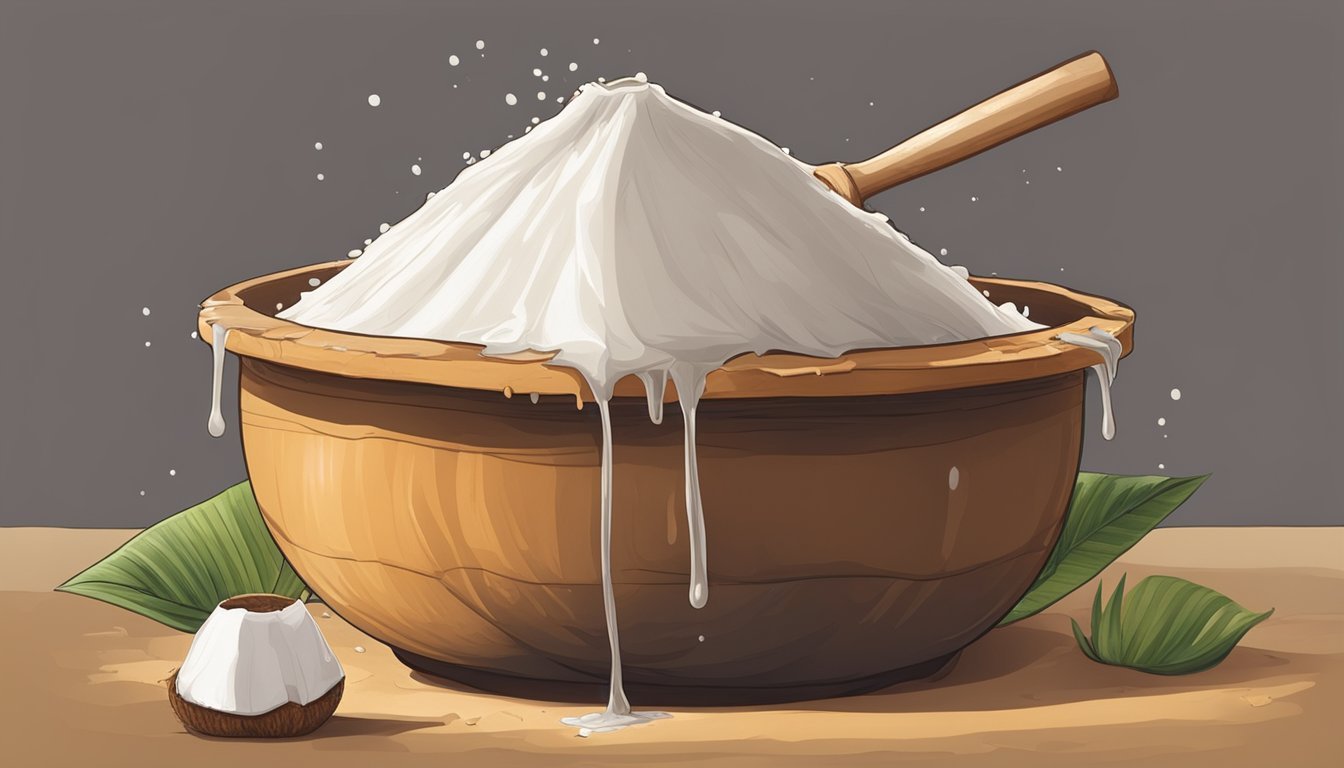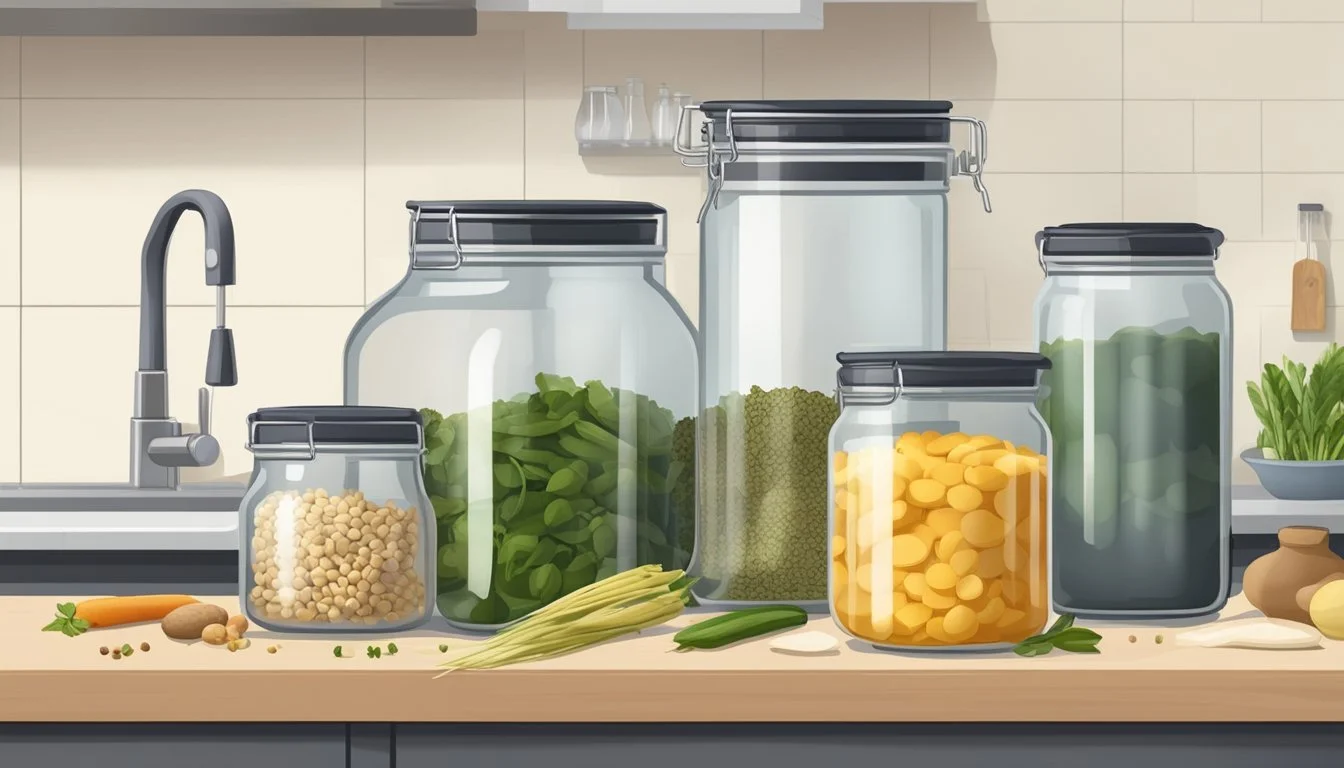How to Ferment Bakhaaru
The Essential Guide to Maldivian Coconut Sap Fermentation
Throughout the Maldives, the process of fermenting coconut sap into a distinctive traditional beverage known as Bakhaaru has been practiced for generations. This unique drink is created through the natural fermentation of coconut sap, a milky liquid extracted from the coconut palm. As part of a rich local heritage, the fermentation of coconut sap carries not only the flavors of the region but also reflects a deep understanding of natural processes crafted through time-honored techniques.
Fermentation is a biological process in which sugars are converted into alcohol, acids, or gases by the action of yeasts or bacteria. In the context of Bakhaaru, it is the spontaneous fermentation by naturally occurring microorganisms that transforms the sweet coconut sap into a beverage that has both cultural significance and local flavor. The practice of fermenting this sap is a fine balance between tradition and technique, relying on the right conditions and careful attention to detail to produce the desired end product.
The method of collecting and fermenting coconut sap for Bakhaaru is a testament to the symbiotic relationship between the Maldivian people and their environment. Local tappers skillfully harvest the sap from the inflorescence of the coconut palm, a task that demands both agility and knowledge of the tree's rhythms. Subsequently, the freshly collected sap is allowed to ferment, following traditional procedures that eschew artificial additives in favor of a purely natural fermentation process. The resulting beverage embodies the essence of the coconut palm, a staple of Maldivian ecology, and a cornerstone of its culinary heritage.
Understanding Fermentation
In this section, we explore the thorough process of fermenting coconut sap to create Bakhaaru, touching on the biological mechanisms, cultural practices, and technical considerations.
Basics of Fermentation
Fermentation is a metabolic process where microorganisms such as yeasts and bacteria convert carbohydrates into alcohol, acetic acid, or other compounds. This transformation occurs under anaerobic conditions and is pivotal in producing a variety of fermented foods (What wine goes well with fermented foods?) and beverages.
Fermentation Process of Bakhaaru
The traditional fermentation of Bakhaaru begins with the collection of coconut sap, which is naturally rich in sugars. This sap undergoes spontaneous fermentation due to indigenous microbes from the environment. Over time, these microbes metabolize the sugar content into alcohol and can further transform into vinegar if fermentation continues.
Scientific Principles Involved
Fermentation relies on the physicochemical characteristics of the sap and the microbial communities it harbors. Gram-positive bacteria and yeasts carry out the fermentation, converting sugars into alcohol and acetic acid. This process is greatly influenced by the pH, temperature, and availability of nutrients.
Benefits of Fermentation
Fermentation enhances the nutritional content of coconut sap, increasing levels of vitamins, amino acids, and minerals such as potassium and iron. It also generates probiotics, beneficial for gut health. Fermented Bakhaaru may have antioxidants and polyphenols, providing an additional energy source without spiking blood sugar due to its low glycemic index.
Potential Risks and Considerations
When fermenting Bakhaaru, it's essential to maintain a clean environment to avoid contamination. Poor practices can introduce harmful bacteria, posing health risks. Fermentation must be closely monitored to ensure the desired levels of alcohol and acidity for safety and quality.
Cultural and Historical Significance
Fermentation of coconut sap has deep roots in many cultures, particularly in regions like India, Philippines, and Kerala. Local communities have been producing beverages like tuba, toddy, neera, and coconut vinegar for generations, with each variant holding significant cultural value.
Comparison to Other Fermentation Methods
Compared to other methods, the fermentation of Bakhaaru is a sustainable process, often conducted through traditional methods without the need for industrial preservatives. Unlike apple cider vinegar which involves a two-stage fermentation, Bakhaaru employs a spontaneous fermentation process without added yeasts, relying on the natural fermentation of wild microbes.
The Coconut Tree and Its Sap
The intricate process of producing Bakhaaru begins with the understanding of coconut palm anatomy and the precise method of sap extraction, which is essential for maintaining the quality and sustainability of this treasured resource.
Anatomy of the Coconut Palm
The coconut palm's flower buds, known as inflorescences, are the source of the precious sap. Coconut trees have a tall, slender trunk with a crown of large leaves and bunches of flowers that play a pivotal role in sap production.
Tapping for Coconut Sap
Traditional methods involve skilled men called 'taperna' or 'kera,' who climb the coconut palm and carefully slice the inflorescence to allow the sap to flow into containers. This practice, referred to as tapping, is conducted with precise cuts to ensure continuous sap flow without harming the tree's lifespan.
Sap Characteristics and Varieties
Coconut sap is a translucent, sweet nectar with varying sugar content and pH levels. It contains numerous volatile compounds that contribute to its unique taste and properties. Coconut sap can be classified into coconut nectar when fresh and coconut aminos when fermented.
Regional Differences in Coconut Sap
Local communities along the coast have developed distinct practices in sap extraction, with variations influenced by climatic conditions and coconut palm species. This results in a range of flavors and applications for the sap.
Coconut Sap in Local Economy
The growing market for coconut-based products, such as coconut sugar and vinegar, relies heavily on sap production. This industry supports local economies and provides a livelihood for communities involved in coconut sap harvesting.
Environmental Impact and Sustainability
Coconut sap harvesting is generally considered a sustainable process as it does not necessitate the cutting down of trees. Sustainable tapping practices contribute to the environment by maintaining the health of the coconut palms and surrounding ecosystems.
Comparative Analysis with Other Tree Saps
Unlike some tree saps that may require more invasive harvesting techniques, coconut sap extraction can be done in a sustainable manner. This sets it apart from other saps where sustainability may be a concern.
Future of Coconut Sap Industries
There is a growing interest in organic and sustainable products, which positions the coconut sap industry for potential growth. Innovations in tapping and fermentation methods could further sustain this trajectory.
Harvesting Practices and Innovations
Recent innovations include more efficient tapping devices and organic methods that improve sap yield while preserving the health of the coconut palm, ensuring a sustainable relationship between production and nature.
Spanning Beyond Sap: Other Coconut-based Products
The coconut tree provides much more than just sap. It gives us coconuts, which can be processed into a variety of products, each integral to the trades and traditions of local societies.
Myth Busting: Common Misconceptions about Coconut Sap
It is often mistakenly believed that coconut sap is inherently alcoholic or that tapping harms the tree. In fact, fermentation is a separate process, and tapping can be performed without causing long-term damage to the coconut palm.
Preparing to Ferment Bakhaaru
Fermenting Bakhaaru, the traditional Maldivian coconut sap, requires meticulous preparation. Achieving the desired flavor and maintaining safety standards hinge upon careful attention to the equipment used, sap quality, cleanliness, and the sap's initial preparation.
Essential Equipment and Tools
When fermenting Bakhaaru, the right equipment is crucial. Containers for collecting and fermenting the sap should be non-reactive, such as food-grade plastic or stainless steel, to prevent unwanted chemical reactions. A thermometer is necessary to monitor the temperature, ensuring the sap is kept at optimal conditions conducive to fermentation. Measuring tools are also needed to check sugar content and pH levels, aiding in the prediction of fermentation outcomes.
Items Required:
Non-reactive containers
Food-grade thermometer
Measuring tools for pH and sugar content
Selection of Coconut Sap
The quality of Bakhaaru relies heavily on the sap's freshness and sugar content. Only sap from healthy coconut trees should be used. It should be collected immediately after tapping, ideally at dawn, which is the peak time for harvesting sap with high natural sugars. Sugar content is fundamental as it drives the fermentation process, with yeasts converting sugars into alcohol and carbon dioxide.
Sap Criteria:
Freshness
Sugar content
Source from healthy trees
Hygiene and Sanitization
Preventing contamination is vital in the fermentation of Bakhaaru. All equipment and storage containers must be sterilized before use to inhibit the growth of undesirable bacteria and wild yeasts. Hands and surfaces should be cleaned thoroughly to ensure a pure fermentation environment. Proper hygiene practices establish the foundation for a successful fermentation and prevent spoilage.
Sanitization Checklist:
Sterilize equipment and containers
Clean hands and surfaces
Maintain a clean work environment
Initial Preparation
Prior to fermentation, the sap must undergo a preparatory stage. It should be transferred into the sterilized containers and sealed to minimize exposure. Temperature control is imperative since too high or too low temperatures can halt the ferment or encourage unwelcome microbes. The sap should be stored at a consistent, moderate temperature optimal for the particular yeast strain used in the fermentation. Lastly, ensure that the pH level is adjusted to create an environment less susceptible to contamination and optimal for yeast activity.
Preparation Steps:
Transfer sap to sterilized containers
Seal to minimize exposure
Regulate temperature
Adjust pH accordingly
Fermentation Techniques and Timing
When fermenting Bakhaaru, the coconut sap undergoes biochemical changes primarily due to the activity of yeast and bacteria. The methods and conditions applied during the fermentation process play a crucial role in the transformation of sap into a flavorful, mildly alcoholic beverage.
Traditional Fermentation Methods
The traditional method of Bakhaaru fermentation involves allowing the coconut sap to undergo spontaneous fermentation. This process is facilitated by the yeasts and bacteria naturally present in the environment and the sap itself. Containers, often wooden or earthen pots, are left open to the environment, where indigenous microorganisms initiate the fermentation process.
Modern Fermentation Practices
In contrast, modern fermentation practices often occur in a lab or controlled environments. This controlled fermentation employs specific strains of yeasts and bacteria to ensure consistency and reduce the risk of contamination. The vessels used in this process are typically sanitized and sealed to regulate the fermentation environment.
Temperature and Environmental Factors
Temperature: Optimal fermentation of Bakhaaru takes place within a range of 70º to 80º Fahrenheit. Environmental factors such as humidity and airflow also affect the fermentation, with higher temperatures speeding up the process and cooler temperatures slowing it down.
Environment: A clean, controlled environment helps prevent contamination, ensuring the quality and safety of the fermented Bakhaaru.
Duration and Stages of Fermentation
Initial Stage: The first 12-48 hours of fermentation are critical, as this is when the yeast converts most of the sugar content in the sap into alcohol.
Mature Stage: As time progresses, the alcohol content stabilizes, and the bacteria play a larger role in developing the final flavor profile.
Monitoring Fermentation Progress
Regular monitoring is vital to ensure a successful fermentation process. Key indicators include changes in pH, sugar content, and alcohol levels. Traditional taste-testing methods and modern instrumentation, like hydrometers, can help track these parameters.
Troubleshooting Common Fermentation Issues
Contamination: If fermentation vessels are not properly sanitized, there is a risk of unwanted bacteria and yeasts leading to off-flavors.
pH Imbalance: Uncontrolled pH levels can inhibit yeast activity or promote harmful bacteria. Monitoring and adjusting the pH as necessary can prevent these issues.
Stalled Fermentation: This can occur if the environment is too cold or yeasts become inactive. Adjusting the temperature or introducing new yeast can reactivate the fermentation process.
Post-Fermentation Processing
Once the fermentation of Bakhaaru is completed, the product goes through several steps to ensure its quality, stability, and the development of desired flavors. These steps are essential for transforming the fermented coconut sap into a variety of shelf-stable and palatable products.
Assessment of Fermentation Quality
The quality of fermentation is crucial and is first assessed by measuring the sugar content, alcohol volume, and acidity. Optimal fermentation typically yields a reduction in sugar content as it is converted into alcohol and other compounds, and this can be confirmed using a hydrometer.
Key indicators to assess include:
Sugar content: Should be significantly reduced from the initial levels.
Alcohol content: Should be consistent with expected levels based on fermentation time and conditions.
Acidity: A pH test can confirm if the sap has reached the desired level of acidity.
Storage and Preservation
Proper storage and preservation are paramount for maintaining the quality of Bakhaaru post-fermentation. The product should be stored at temperatures between 2°C to 4°C to prevent further fermentation and spoilage. Containers made of non-reactive materials such as glass or stainless steel are recommended to avoid flavor taints or chemical reactions.
Refrigeration: Slows down microbial activity.
Containers: Should be airtight to hinder the introduction of oxygen and contaminants.
Maturation and Flavor Development
During maturation, the flavors of Bakhaaru deepen and complex volatile compounds develop. This phase should be closely monitored as the development of desirable flavors from esters and other compounds signifies a successful fermentation process.
Considerations during maturation:
Time: The duration can range from several weeks to months.
Environment: Consistent temperature and absence of light contribute to steady maturation.
Further Processing into Vinegar or Alcoholic Beverages
The fermented sap can be further processed to produce vinegar or various alcoholic beverages. For vinegar, the presence of acetic acid bacteria is essential, as they convert alcohol into acetic acid.
Steps for further processing:
Alcoholic beverages: Distillation may be required to increase alcohol content for spirits.
Vinegar: Aeration promotes the growth of acetic acid bacteria, initiating the transformation into vinegar.
Important Note: In both processes, careful control of environmental conditions is needed to ensure the desired end product.
Health Benefits and Nutritional Profile of Fermented Bakhaaru
Fermented Bakhaaru, a traditional Maldivian coconut sap beverage, embodies a rich nutritional profile. Its fermentation process enhances both its health benefits and its complex flavor profile.
Comparative Analysis with Other Fermented Foods
When compared to other fermented foods like kombucha or yogurt, fermented Bakhaaru offers a unique combination of nutrients due to its coconut sap origin. It contains probiotics similar to those found in these fermented staples, promoting a healthy gut microbiome. The natural sugars present in the coconut sap undergo fermentation, converting them into beneficial acids and alcohol, which can be lower in concentration compared to other fermented alcoholic beverages.
Impact on Digestive Health
Bakhaaru is rich in probiotics, the beneficial bacteria that play a crucial role in maintaining gut health. These bacteria aid in digestion and have a positive impact on the body's digestive processes. Regular consumption can lead to an improved balance of gut flora, which is essential for a healthy digestive system.
Nutritional Breakdown of Bakhaaru
Nutritionally, Bakhaaru is a valuable addition to one's diet. It contains:
Vitamins: Essential B vitamins and vitamin C.
Amino acids: Providing the building blocks for protein synthesis.
Dietary fiber: Important for digestive health.
Antioxidants: Help in protecting the body against cellular damage.
This fermented beverage is also a source of energy while generally being considered to have a low glycemic index.
Blood Sugar Management
Due to its low glycemic index, Bakhaaru can be a suitable part of dietary management for those monitoring their blood sugar levels. The fermentation process helps in modulating the release of sugars, preventing spikes in blood glucose levels commonly associated with intake of high glycemic index foods.
Enhancement of Immune Function
The fermentation of Bakhaaru increases its content of beneficial bacteria, which could play a role in enhancing immune system function. These probiotics and the antioxidants present in Bakhaaru are known for their immune-boosting properties, potentially contributing to overall health and resilience against common illnesses.
Cooking and Culinary Uses of Bakhaaru
Bakhaaru, a traditionally fermented coconut sap popular in the Maldives, serves versatile culinary purposes, from traditional recipes to contemporary cuisine, offering unique flavors and nutrition.
Incorporation into Traditional Recipes
Traditionally, Bakhaaru has been a key ingredient in Maldivian cooking, especially for creating rich marinades for seafood dishes. It imbues a unique, slightly tangy taste that complements the fresh flavors of the ocean.
Modern Culinary Applications
In modern kitchens, chefs have begun utilizing Bakhaaru in baking and sauces, providing a distinct fermented sweetness that contrasts well with savory elements. It has also found its way into salad dressings, lending a complex flavor profile to simple greens.
Bakhaaru as a Health Food Ingredient
The natural fermentation process of Bakhaaru yields beneficial probiotics. This has made it a sought-after ingredient in health foods and dietary management. It’s often used as a nutritious sweetener in smoothies and yogurts.
Cocktails and Innovative Beverage Creations
Bartenders are now experimenting with Bakhaaru, introducing it into cocktails for a novel twist. Its fermentation introduces a new dimension to alcoholic beverages, where it can be used as a base or sweetener.
Pairing Suggestions for Different Foods and Dishes
Bakhaaru pairs excellently with a variety of foods. With seafood, it enhances natural flavors, while with vegetables, it can be a balancing agent. It works well in dishes that would typically use vinegars or tangy sauces.
Substitution for Other Fermented Products in Recipes
Bakhaaru can be an alternative to other fermented products such as coconut sugar or coconut nectar. It offers a similar profile with an added depth from the fermentation, working well in recipes that call for a unique, sweet edge.
Homemade Recipes and DIY Ideas
For those interested in DIY culinary projects, making homemade Bakhaaru can be a rewarding experience. It can then be used in a myriad of recipes, from homemade bread to creating your own fermented marinades and condiments.






